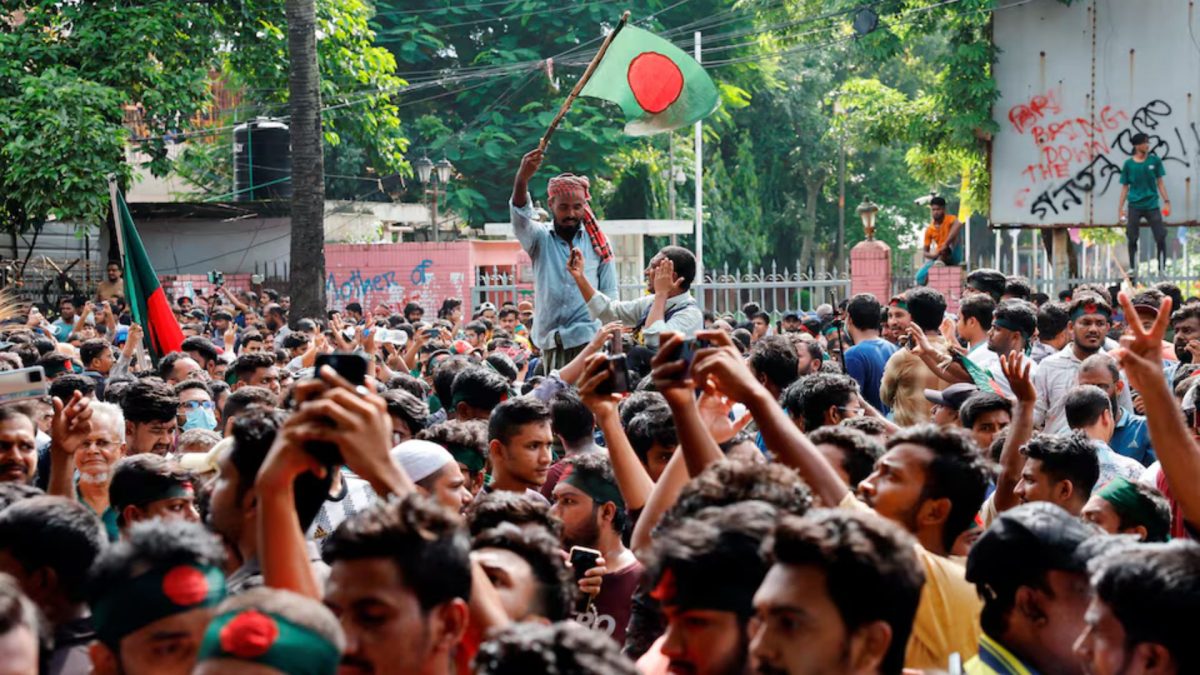What is next for Bangladesh after the coup against Sheikh Hasina? We do not know. But many in the media say that great things are about to happen. As for the attacks against Hindus in Bangladesh, liberals have gone to great lengths to make excuses. So you have to admit that the international public relations campaign around the coup has been superb. Much of this came from the fact that they chose to present themselves as protesting students. At some level, we all have this idea that student protesters, with fresh, young faces and new ideas, will make the world a better place. But is there any reason to assume that student protesters are better than everyone else? The answer is no, if you look at history.
First, let us say the obvious. Yes, student protesters can be heroes. The students who stood up to tanks at Tiananmen Square in 1989 against the Chinese dictatorship certainly were heroes. So were the students who protested against Communist rule in Hungary in 1956. Until their protest was crushed by Soviet tanks.
But student protesters can also be morally bankrupt. In the 1960s, student protesters in the United States would greet each other with “four-finger salutes”. Why four fingers? To honour a crazed murderer called Charlie Manson who had attacked a Hollywood actress who happened to be pregnant at the time. After killing her, Manson had stuck a fork in her belly. The four fingers were a reference to that fork.
These students were members of a group called Students for a Democratic Society, or SDS. At the time, it was one of the largest campus groups in the United States, with over 100,000 members. They spoke of Mao, Che Guevara, and revolution. They seized control of campuses like Columbia, leading to battles with police. The SDS wanted to build a new society. They wanted to tear down everything that was old, including all kinds of morality.
Impact Shorts
More ShortsStudent protesters can also be incredibly naive. And they can play easily into the hands of bigger forces without realising. “We are not with Dubcek, we are with Mao,” a number of Italian student organisations declared in 1968. That was when the Communist bloc sent tanks to Czechoslovakia to remove Alexander Dubcek, the leader of the country who had promised free elections. At that time, Rudi Dutschke, a student leader who had achieved cult status in West Germany, went on a visit to Prague. As historian Anthony Judt notes in his book Postwar, local students in Czechoslovakia were stunned when he told them that democracy was “the real enemy”. Rudi Dutschke had risen to international fame in 1967 after he led massive protests against the shooting of a young student by police in West Germany. It was only in 2009 that it became known that the policeman who had shot the student was actually a secret agent of Communist-ruled East Germany. The shooting had been a plot to create chaos and unrest.
And student protesters can easily turn into something very dangerous. In 1978, former Italian Prime Minister Aldo Morro was kidnapped, held hostage for 55 days, then murdered and dumped on the streets of Rome. That was the work of the Brigate Rosse (Red Brigades), a radical group started by two students from the University of Trento. Similarly, a generation of radicals born out of West German student protesters in the 1960s carried out a wave of assassinations, bombings, and arson for many decades to come.
Here is another common mistake. Never confuse student protesters for the voice of the youth, let alone the voice of the people as a whole. More often than not, university students represent the most privileged of the youth of a nation. This class conflict was very clear during student protests in the United States in the 1960s and 1970s. For example, it showed in 1970, when students were beaten up by New York city construction workers carrying American flags and chanting “USA, all the way”.
At the peak of the anti-Vietnam war protests, President Richard Nixon gave a famous speech where he appealed to the “silent majority” of Americans. It worked. Nixon won the 1972 election in a landslide, carrying 49 out of 50 states. Similarly, university students created such a ruckus in the streets of Paris in May 1968 that President Charles de Gaulle had to flee the country briefly. It seemed like the French government would be overthrown. But then elections were called. The president’s party swept the election, winning nearly three-fourths of the seats. The people had been with the president all along, not the protesting students.
India itself is home to many such troubled histories of “student movements.” The Students’ Islamic Movement of India, or SIMI, is banned for being a terrorist organisation. But there are several still legal left-wing student organisations in India whose history would make for equally terrifying reading. Some would meet under the leadership of people actively engaged in efforts to overthrow the Indian state and who had visited China secretly. Let’s just say you have seen these “activists” on the news more often than you might realise.
In summary, student protesters are like anyone else. While student protesters have played heroic roles in history, they have also been naive, morally questionable, and even dangerous. It is best to critically evaluate their actions rather than assume their inherent goodness. As for Bangladesh, we can only hope for the best. We hope that they quickly become a democracy again. That Hindus in Bangladesh feel safe. And that Bangladesh realises that a bright future for their country lies in continuing friendship with India.
Abhishek Banerjee is a columnist and author. Vijita Singh Aggarwal is a professor of international business at Indraprastha University. The views expressed in the above piece are personal and solely those of the writers. They do not necessarily reflect Firstpost’s views.
)